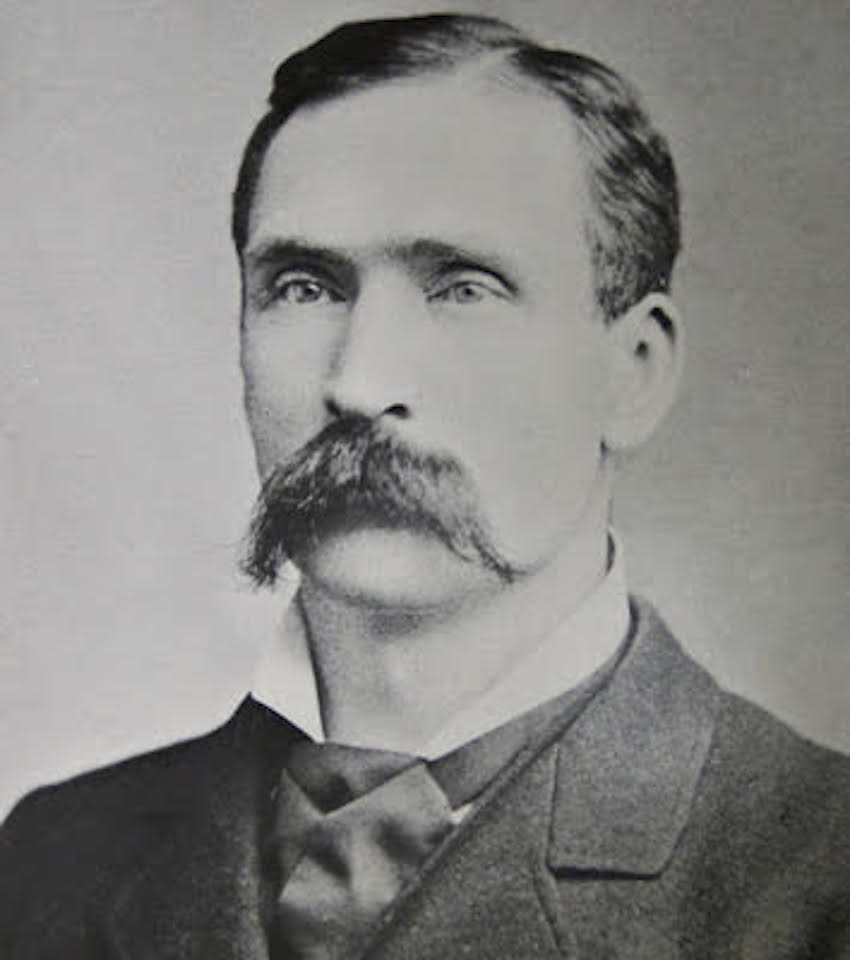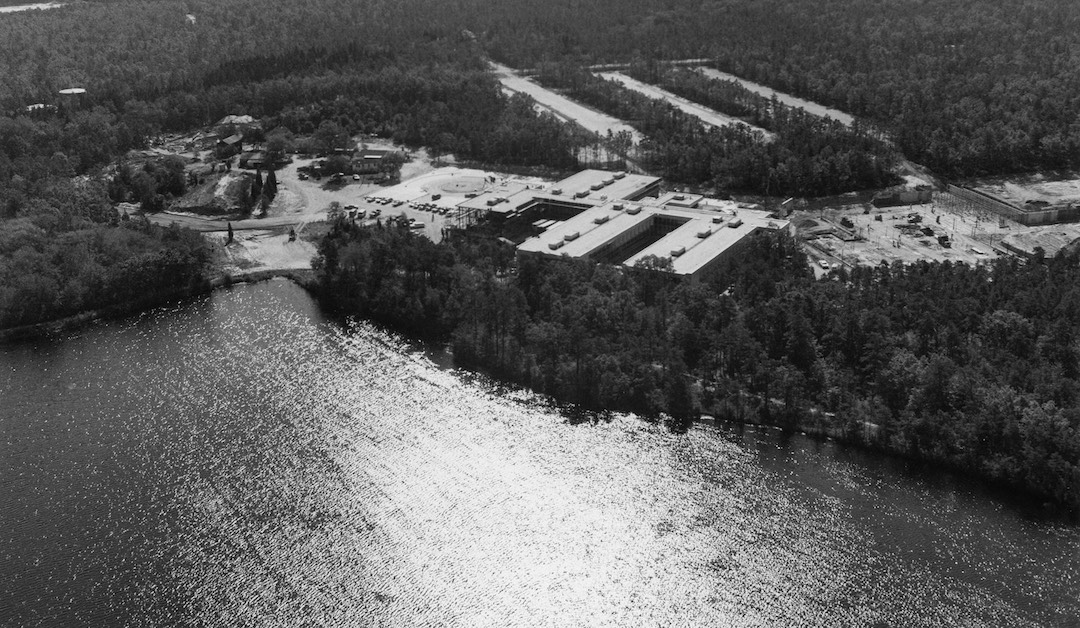Lake Fred's Cranberry Bog Years
By Sarah Galzerano

A.J. Rider, the "Cranberry King of New Jersey"
In 1900, a few decades after this land was home to sawmill operations, it was acquired by Andrew Jackson Rider and George E. Gossler, and what would eventually become Lake Fred was utilized for cranberry production, operating under the Pomona Fruit Company. The cranberry industry in New Jersey had developed some time before – as early as 1850 – and cranberry farming quickly became one of the most profitable occupations. The craze had trickled down from Massachusetts, the first state to begin cultivating cranberries in the early part of the century.
At the time, Rider was known as the “Cranberry King of New Jersey,” not only for owning hundreds of acres of bogs, primarily throughout Hammonton, but also for introducing the plant to England. He is better known as the founder of Rider University. Both Rider and Gossler served on the board of the American Cranberry Growers’ Association (founded in 1871) for quite some time; Rider was secretary and treasurer, and Gossler, secretary of advertising. Even as close partners, they viewed the occupation differently. Rider favored cooperative selling, whereas Gossler preferred to market in a small and personal manner.
During the 1910s and 1920s, the Lingelbach family were caretakers of the cranberry bog that sat on today’s campus. Their farmhouse was situated off of the southeast shore of the lake, around the intersection of Vera King Farris Drive and Lakeside Lane; it can be seen in early construction aerials of Stockton State College. Each fall, between September and December, it was typical to harvest between 8,000 and 10,000 bushels of cranberries with the help of around 40 pickers. John Lingelbach, who was then just a teenager, recalls harvesting crops of centennials (mid-season, large, and light in color), and early black cranberries (early season, medium, and dark in color), working 8-hour days in the bog. He once picked 21 bushels by himself. For each bushel, he earned around 40 cents.
In order to regulate the water levels in cranberry bogs, streams needed to be dammed. Around 1918, the Lingelbachs constructed a concrete dam on Moss Mill Stream. John recalled it taking about six men between early fall and Christmas to finish construction. They had driven the pilings by hand, taking about 2 or 3 days for each piling. This dam stood intact until the early 2000s. Because of how shallow it is, some believe that Cedick Run Bog (the southernmost body of the Lake Fred complex) may have originated as a man-made reservoir; gates would have held the water back, until the bog needed to be flooded.
The cranberry industry was losing its popularity by the 1920s, and after some 20 years of harvesting, the Lingelbachs sold their farm. After Rider’s death in 1929, his son-in-law inherited the land, but soon after, Gossler purchased it. He built up several other bogs in the Port Republic area, including the 50 acres at Pomona, 70 at Wading River, and 30 at Ives Branch. After Gossler’s death in 1940, Joseph H. Palmer, whose wife was Gossler’s niece, inherited these 150 acres. However, they could not afford to care for all of the land, and so the bogs that the Lingelbachs once carefully tended to, were forgotten.
In 1954, the Sawmill Corporation acquired the land and converted the bogs back into lakes. By 1957, they had constructed log cabins along the northern shore, which were used as offices when Stockton State College first moved from the Mayflower Hotel to the Pomona campus in 1971. Of course, this was after the land had already been purchased by the state. The Sawmill Corporation, contrary to how it sounds, was a group of families who desired the land for a weekend and summer resort; they simply needed a name to hold the title. Around the same time, the Hanson family was living on the farm that once belonged to the Lingelbachs. We know that there were Hansons involved with the Sawmill Corporation, but are unaware of any relation.
There are many remnants of Lake Fred’s cranberry years that are still visible today, if you know where to look. Descendants of the old cranberries can still be found in the upper reaches of Lake Fred. The ditches that line the southern shore also point to this time. One large ditch in particular, about midway on the southern shore between Lower Lake and the southeast corner of Fred, was the foundation of some sort of building. It was likely a store or a cranberry packing plant.

Dam constructed in 1918 to regulate the waters of Lake Fred for cranberry agriculture. The dam and bridge survived until it was replaced in the late 1990s. Click on the photo to listen to John Lingelbach describe the dam's construction.
Further Reading:
Mark J. Fletcher. "The Fletcher Project: Stockton State College History." 1978. (Mark J. Fletcher, then a Stockton student, interviewed John Joseph Lingelbach in 1978. Photographs, a map, and a [now] digitized audio interview describe Lake Fred's use as a cranberry bog in the early twentieth century.) Available in the Stockton Archives, the Bjork Library.
Clarence J. Hall. “Would like to ‘Kindle Fire under New Jersey Industry.’” Cranberries - The National Cranberry Magazine, 1946-02, Wareham Courier Office
Stockton’s Natural History Blog
Report and Recommendations on Property Purchase Practices of the State Division of Purchase and Property. The New Jersey State Commission of Investigation. June 1972.
Further Viewing:
When Lake Fred was a Cranberry Bog (2020)
An excerpt from a longer conversation (63 minutes) between James Pullaro, William Hamilton, Ray Reichardt and Tom Kinsella, which took place on February 5, 2020. James and Willy, both employed by the Division of Facilities & Operations at Stockton University, are historians of the southeastern Pine Barrens, and are especially knowledgeable about the land upon which Stockton is built. Ray Reichardt is a recent graduate of the Communications Studies program (S2020). Working with Professor Tom Kinsella, Ray interviewed James and Willy about historical aspects of the Stockton property including the identification of Stockton’s Revolutionary War era sawmill, located on Lake Fred, and, in this excerpt, Lake Fred’s cranberry period. Two points deserve special mention. James, Willy and Tom are indebted to Mark Fletcher, whose 1978 interview with the aging John Lingelbach, son of the manager of the Lake Fred bog, provides us with our best source of information for the cranberry period; Mark completed the interview for the Stockton class “Folklore & Folklife of South Jersey.” James also mentions Don Bragg, an Olympic gold-medalist in the pole vault and Stockton’s first Director of Athletics. The complete interview is preserved in Stockton’s Archives.


